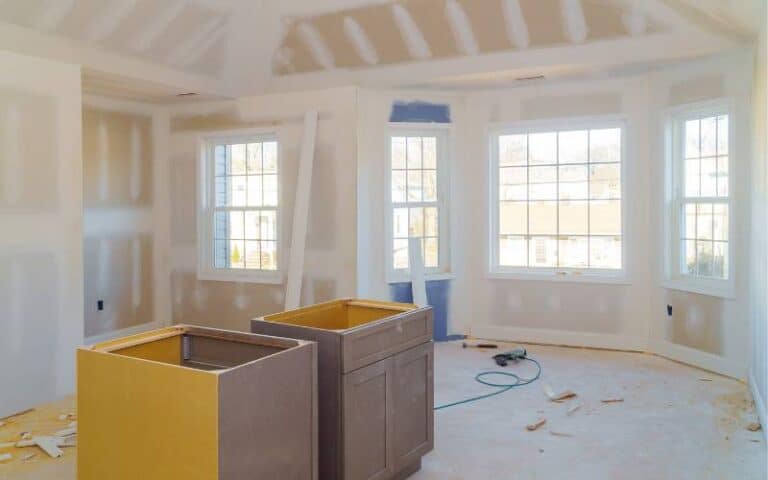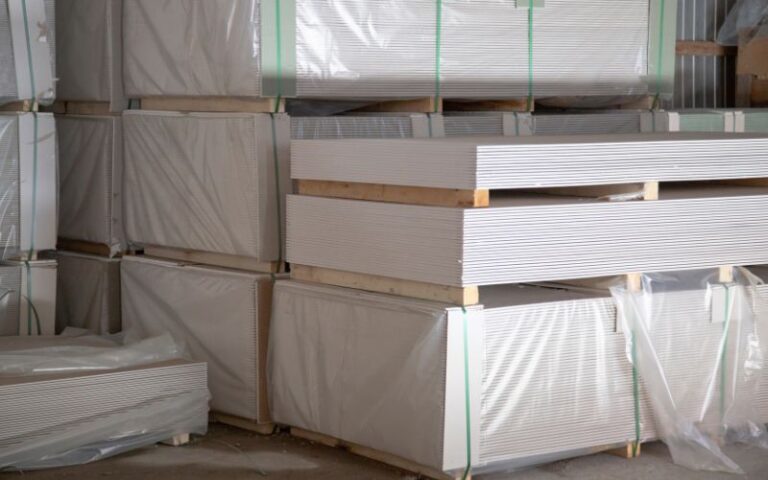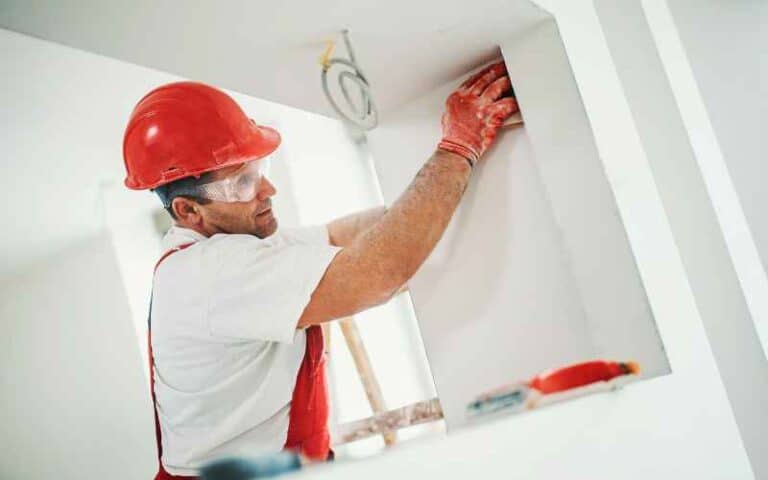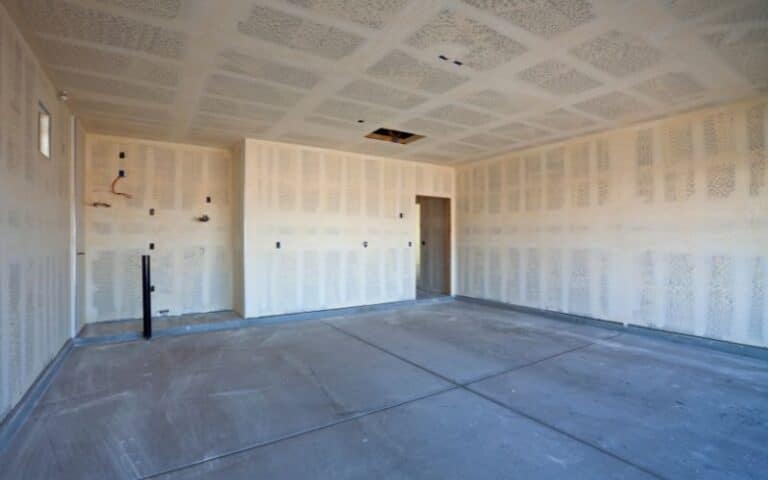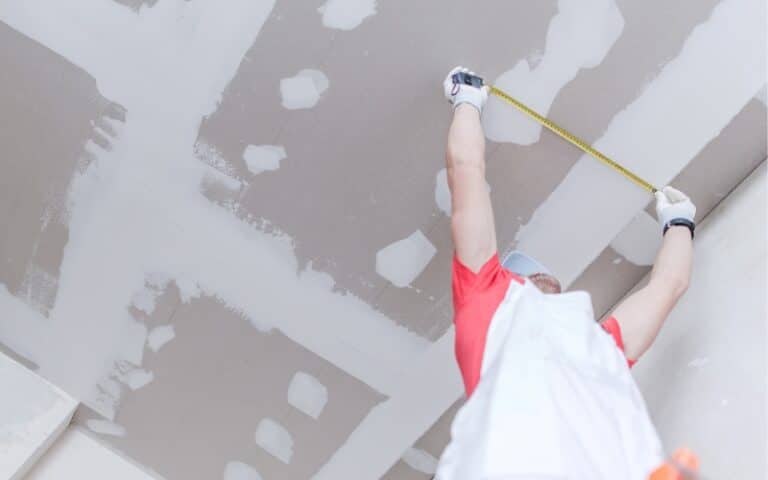Building your dream home takes much more than just having a perfect picture in your head; you’ll need the best men ready with their appropriate tools for the job.
That expertise will come in handy, especially during the drywall installation; however, when that’s in place, what follows will have to be your next agenda.
When constructing a house, many things come in after the drywall installation stage; the earliest involves preparing the drywall by dust removal, sanding, washing, and drying before applying paint. Also, other things, such as deciding the wall texture, flooring, and cabinet fixing, begin after drywall installation.
This guide has rich content about how and what you should do next after installing your drywall.
In the end, you’ll discover the average time it takes to finish your home construction after drywall.
Ready for a Drywall Quiz?
What Comes After Drywall Installation?
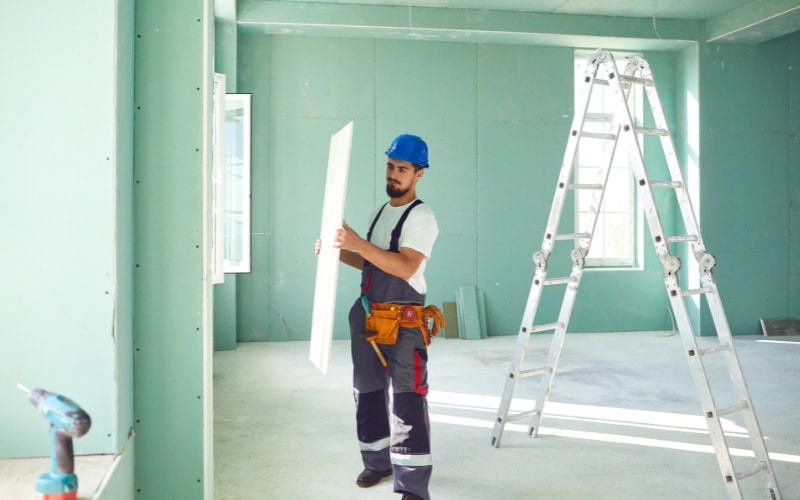
Installing your drywall means you’ve done half the job of getting your home ready; you can still do many things after installing the drywall.
After fixing the drywall, other important things’ll need to be put in place for the house to approach its near-completion state.
Those things include moving on to the second phase of your home-building process.
Before we talk about the processes that follow drywall installation, here are the last two things that complete your first phase after drywall;
Siding the Exterior: This step comes after the drywall, which involves using stones or bricks to lay down the sides of the exterior of your home.
Also, if you don’t want to use stones, you can use stuccos or any stonework if you so choose.
Creating Your Exterior Driveway: Here, you get to finish up other exterior workings within the first step of your finishings.
At this point, you can lay down walkways and construct your garage to suit the demand.
Now, in no particular order, let’s go over some things that should generally follow drywall installation while building your home.
Interior Trim: You install your interior wood trim and other decorative finishings at this stage. Alongside installing the wood trim, you can also install your interior doors here.
Cabinet: Fixing the cabinet comes after the interior trim and door installation. Here, you can allocate different cabinets to different spaces in your home, like the kitchen, bathroom, etc.
Flooring: You’ll have to do this before installing the cabinet, and it’s at this stage you get to fix the tiles on the floor.
Wall Texture: Here is where you decide the texture of the wall you want in your home; rough vs. smooth and bullnose vs. knife-nose edges.
However, for this purpose, here’s the order of things after installing the drywall.
- Wall Texture
- Internal trim
- Flooring
- Cabinets
- Interior paints
- Hardwood floors
- Touch-ups
- Countertops
- Mechanical Trim out
- Landscaping
- Appliances and quality inspection
How Long Does Drywall Installation Take?
The time it takes to hang a drywall depends on factors like precision, expertise, and the number of people handling it.
The time it takes to install drywall also depends on the number and accuracy of tools you have available for the job.
When two experts handle a drywall installation, it should take less time. Covering a 12×16 room size with drywall shouldn’t buy two pros in the job and shouldn’t take longer than an hour.
That said, hanging drywall should be about something other than how long it takes but how well it should be.
That’s because hanging drywall isn’t a clear-cut thing; while it takes someone one hour to fix, it might take another all day to install.
That’s where many factors come into play in determining how many hours it takes to install the drywall. Now let’s go over a few factors that can shorten or prolong your drywall installation.
Ease of the Drywall: Usually, all drywalls are easy to cut and install, but some can prove a little tougher than others, which means a harder installation.
Say, for example, paperless drywall; while some professionals find it harder to cut, others prefer it over regular drywall.
A Friend to Help: With a helping hand, installing your drywall shouldn’t take long; all you need to have other factors in place to get the drywall sitting on the wall in little or no time.
Level of Expertise: This factor is very important because if you know what you’re doing, you wouldn’t need much time handling it.
Essentially, your skills determine how fast or slow you get installing the drywall.
Availability of Tools: Your pieces of equipment determine your speed. If you don’t have all the necessary tools available, you’ll work slower than when you have them all available.
Should You Paint Immediately After Drywall?
You can only paint after you’ve prepared your drywall. That’s because you’ll have to prepare the drywall for it to adapt to your paint.
Applying paint on it will be easier with adequate preparation; if you eventually do that, the paint will sit well on the drywall.
Most often, it’s because of improper preparation of drywalls that makes paints peel off from drywall easily.
That’s why this section will help you know how to prepare your drywall adequately before applying paint to it.
Now, let’s prepare our drywalls to make them fit for paint application.
Step 1: Inspection
The first thing you must do after installing your drywall is to inspect the drywall for holes or dings. If you don’t find any, good enough but if you do, fill them up with drywall mud.
However, if drywall mud isn’t available, you can use another suitable solution. The essence of this step is to give you an evenly-surfaced drywall.
Step 2: Sanding
Sanding your drywall is the next and most crucial step because it completes the smoothening process. Again, a pole sander does this job perfectly.
Step 3: Dust Removal
After coating your drywall with sand, you’ll want to dust it to get an even surface. You can use a vacuum to dust out the sand alongside a towel.
The towel will help you check if there’s still sand on the drywall after vacuuming.
Step 4: Drywall Washing
This step involves soaking a sponge in a bucket of water mixed with a cup of vinegar; the accurate measurement is one cup of vinegar to one gallon of water.
Scrub the drywall with the solution and check if you’ll need to repeat the process with a new solution.
If the water turns dark after the first wash, please mix another solution and wash again for a cleaner look.
Step 5: Drying Your Drywall
This preparation stage involves bone drying the drywall. Again, you can set up a fan to sit directly facing the drywall at its highest speed to achieve this result.
After completing the above steps, your painting can sit on the drywall without issues.
How Long Does Finishing Take After Drywall?
Finishing your home after installing the drywall should take at least two months. This stage is when your home is taking shape with the completion of most of the interior carpentry.
That said, there needs to be a clear cut when finishing should last because different factors can affect it.
Those factors range from poor expertise to delays in the availability of materials and tools. Other unavoidable factors can also interrupt the finishing process, thereby prolonging it.
Therefore, here’s a list of factors that can prolong the duration of your home finishing;
- Technical-know-how
- Poor tools availability
- Weather conditions
- State of the lot
The table below summarizes the average timelines according to the different stages of your home construction.
| Construction Phases | Average Timeline |
|---|---|
| Pre-construction period | Two months or longer |
| Lot preparation and foundation lay-down | One month |
| House framing and roof building | Few weeks |
| Siding, wiring, and plumbing of the house | Ideally, less than a month |
| Interior finishing | Approximately two months |
| Finish work | Two months or more |

